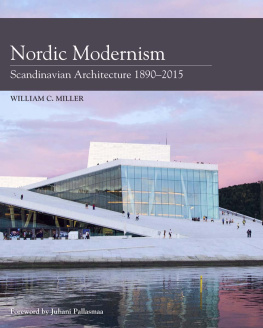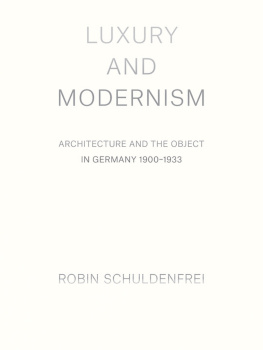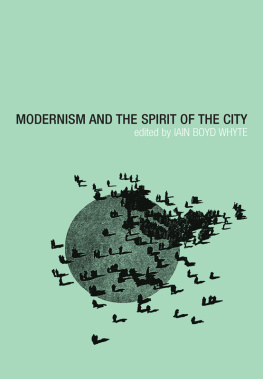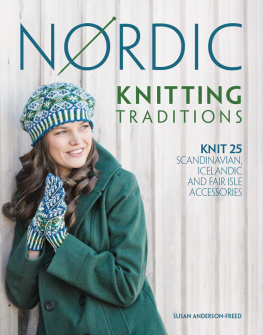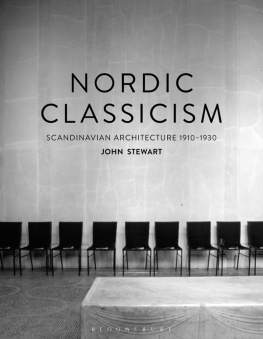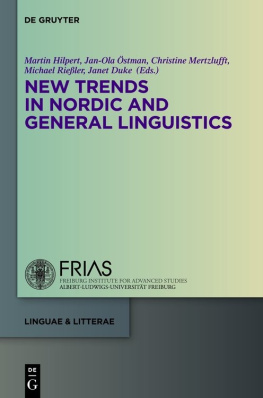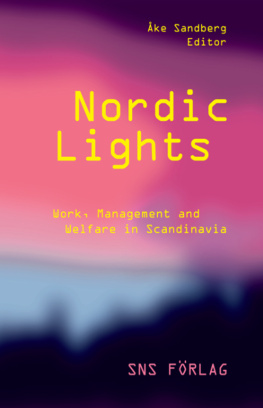William C Miller - Nordic modernism Scandinavian architecture 1890-2015
Here you can read online William C Miller - Nordic modernism Scandinavian architecture 1890-2015 full text of the book (entire story) in english for free. Download pdf and epub, get meaning, cover and reviews about this ebook. publisher: Crowood, genre: Romance novel. Description of the work, (preface) as well as reviews are available. Best literature library LitArk.com created for fans of good reading and offers a wide selection of genres:
Romance novel
Science fiction
Adventure
Detective
Science
History
Home and family
Prose
Art
Politics
Computer
Non-fiction
Religion
Business
Children
Humor
Choose a favorite category and find really read worthwhile books. Enjoy immersion in the world of imagination, feel the emotions of the characters or learn something new for yourself, make an fascinating discovery.
- Book:Nordic modernism Scandinavian architecture 1890-2015
- Author:
- Publisher:Crowood
- Genre:
- Rating:3 / 5
- Favourites:Add to favourites
- Your mark:
- 60
- 1
- 2
- 3
- 4
- 5
Nordic modernism Scandinavian architecture 1890-2015: summary, description and annotation
We offer to read an annotation, description, summary or preface (depends on what the author of the book "Nordic modernism Scandinavian architecture 1890-2015" wrote himself). If you haven't found the necessary information about the book — write in the comments, we will try to find it.
Nordic modernism Scandinavian architecture 1890-2015 — read online for free the complete book (whole text) full work
Below is the text of the book, divided by pages. System saving the place of the last page read, allows you to conveniently read the book "Nordic modernism Scandinavian architecture 1890-2015" online for free, without having to search again every time where you left off. Put a bookmark, and you can go to the page where you finished reading at any time.
Font size:
Interval:
Bookmark:

First published in 2016 by
The Crowood Press Ltd
Ramsbury, Marlborough
Wiltshire SN8 2HR
www.crowood.com
William C. Miller 2016
All rights reserved. No part of this publication may be reproduced or transmitted in any form or by any means, electronic or mechanical, including photocopy, recording, or any information storage and retrieval system, without permission in writing from the publishers.
British Library Cataloguing-in-Publication Data
A catalogue record for this book is available from the British Library.
ISBN 978 1 78500 237 3
To Beverly and her valiant struggle with Alzheimers disease
The Image of the North
T HE NORTH IS SIMULTANEOUSLY A MYTHIcal and concrete notion, mythical in a mental, symbolic and historical perspective and concrete in terms of being one of the most stable and balanced corners of the world and an ideal of well-functioning modern democracies. The North has traditionally been seen as the remotest region of Europe with a rather disadvantageous climate. However, the current warming of the global climate and the eventual opening of new northern shipping routes, as well as the newly found natural resources in the Arctic Ocean, are potentially changing the peripheral location of the area. The notion of The Northern Dimension reflects this new attention and has already become part of todays political and economic terminology. The current environmental and cultural developments may well alter the dialectics of centre and periphery. In todays world of forceful technologies, we tend to forget the fact that it is due to natural conditions, the Gulf Stream, that human culture at the level of the Nordic countries, located largely north of the 60th latitude, has been possible in the first place.
As a mythical mental image, the North is not a place, but rather an orientation, an atmosphere and a state of mind. Historically, the North has referred to the unknown. Virgil, the Roman poet of the Augustan era, used the term Ultima Thule, the ultimate north, as a symbolic reference to an unknown far-off place, a non-place and even an unattainable goal. This mythical echo still reverberates in the dreams and thoughts of Southern cultures. The Southern cultures have traditionally dreamt of the North, whereas the Nordic people and artists have longed for the South, particularly the Mediterranean world. Characteristically, due to the idealized imagery of Southern deciduous forests and cultural landscapes, Finnish artists did not paint their dominant coniferous or mixed forest before the mid-nineteenth century. Something of the ageless mythical feeling of the North still exists even in the minds of todays Swedes, Norwegians and Finns, whose countries extend well beyond the Polar Circle; northern Lapland and the Arctic Ocean continue to project an air of danger, mystique and the unknown.
The concepts of the Nordic countries as well as of Nordic architecture are products of the modern era, as they did not exist in a wider international consciousness before the late nineteenth century. The monarchies of Sweden, Denmark and Norway have long and varying histories, whereas the idea of national independence emerged in Finland only towards the end of the nineteenth century and was decisively promoted and formulated by the arts. Alvar Aalto makes the point that only through the Finnish Pavilion at the Paris World Fair in 1900 did Finnish culture enter an international consciousness and dialogue.
For the first time, Finland appeared on the continent with tangible materialized forms as a source of culture that might influence others, rather than simply being on the receiving end It is difficult for a small country to make its psyche understood in a global context, the more so if it has a language that is, and will remain,
Here Aalto refers to the material language of architecture and the non-verbal language of music. This view of the significance of Eliel Saarinens Finnish Pavilion applies to Nordic architecture altogether; since the late nineteenth century, the Nordic countries have had masterful individual architects who have become part of the world history of this art form. Not to underestimate the contributions of Nordic writers, artists, composers and scientists for the Nordic identity, I venture to argue that it is through the modern democratic societies and general cultural achievements in the material arts, such as architecture, that the Nordic countries are known in the larger world today.
The Interplay of the Material and the Mental
The Nordic countries are often seen as a unity and indeed, the cultures, lifestyles, values and artistic expressions of the four countries (Iceland, the fifth Nordic country, is not included in this book) are similar and their long intertwined histories have tied these nations together in a multitude of ways. But the differences are equally noticeable. The differences are distinct in the geographies, landscapes, human temperaments and cultural habits, as well as artistic sensibilities. Generally we are not very sensitive to understanding differences in the material world, but the differences are as clear as between cultural behaviours and languages. We habitually underestimate interactions of environments and culture, settings of life and human character. Yet our environments of life and our minds constitute an indivisible continuum. As the visionary American anthropologist Edward T. Hall argues:
The most pervasive and important assumption, a cornerstone in the edifice of Western thought, is one that lies hidden from our consciousness and has to do with a persons relationship to his or her environment, Quite simply, the Western view is that human processes, particularly behaviours, are independent of environmental controls and influence The environment provides a setting which elicits standard behaviours according to binding but as yet unverbalized rules which are more compelling and more uniform than such individual variable as personality Far from being passive, environment actually enters into a transaction with humans.
We still underestimate the interactions of environments and culture, settings of life and human character and do not see or acknowledge their interdependencies. Yet, as the American literary scholar Robert Pogue Harrison suggests poetically: In the fusion of place and soul, the soul is as much a container of place as place is a container of soul; both are susceptible to the same forces of destruction .
Towards Modernity
Due to their 600 years of shared political history and rather similar geographic conditions, Sweden and Finland share more similarities, perhaps, than the other Nordic countries, although they also share their complexly intertwined histories. Even language conditions our ways of perceiving the world and dealing with it conceptually, intellectually and emotionally. Consequently, it is reasonable to argue that our mother tongue is our first domicile. As a Ural-Altaic language, Finnish is fundamentally different from the other Nordic languages, which belong to the Indo-European language group. The fact that Finland has a 6 per cent minority population, mainly located on the south and west coasts, who speak Swedish, further complicates the interplay of similarities and differences. In any case, the differences are equally clear as the similarities. Due to her location, Denmark has naturally been more connected with continental European cultures and its general mentality is more urban and perhaps more sociable and open-minded. Historically, the Norwegians have been somewhat isolated due to their rugged mountainous geography and deep fjords and this condition has been reflected in their character, as well as their cultural products.
Next pageFont size:
Interval:
Bookmark:
Similar books «Nordic modernism Scandinavian architecture 1890-2015»
Look at similar books to Nordic modernism Scandinavian architecture 1890-2015. We have selected literature similar in name and meaning in the hope of providing readers with more options to find new, interesting, not yet read works.
Discussion, reviews of the book Nordic modernism Scandinavian architecture 1890-2015 and just readers' own opinions. Leave your comments, write what you think about the work, its meaning or the main characters. Specify what exactly you liked and what you didn't like, and why you think so.

